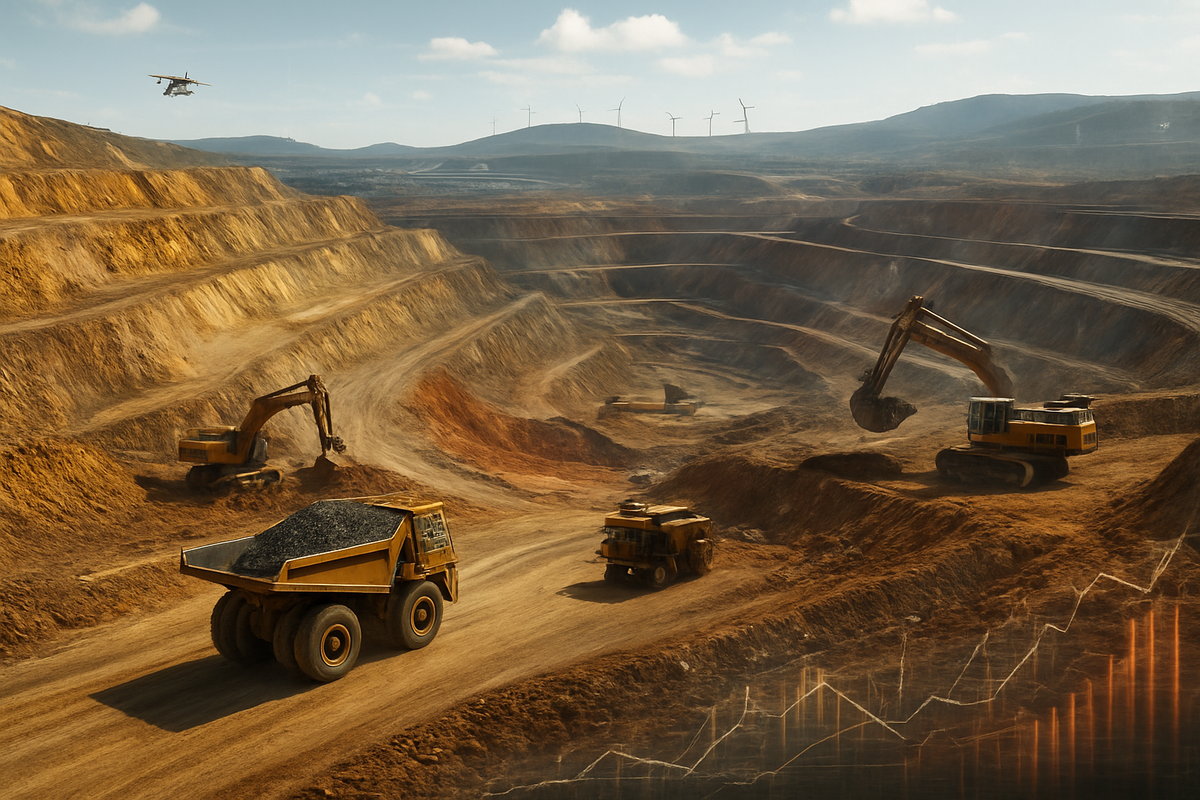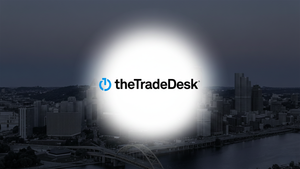
The global mining sector is currently undergoing a transformative period, with gold-copper project exploration and development taking center stage. As of November 12, 2025, robust commodity prices, escalating geopolitical complexities, and an intensified focus on Environmental, Social, and Governance (ESG) principles are driving unprecedented activity. This dual demand for both safe-haven gold and industrial copper is creating a dynamic landscape, prompting substantial investment and strategic realignments across the industry. The immediate implications are a projected modest growth in global gold supply, primarily from new mine production, alongside a significant push to develop copper resources vital for the global energy transition.
Detailed Developments: A Global Snapshot of Gold-Copper Frontiers
The period from late 2024 through November 2025 has been marked by critical milestones and persistent challenges across several world-class gold-copper projects. These developments underscore the industry's commitment to unlocking significant reserves while navigating complex regulatory, environmental, and social landscapes.
The KSM Complex in British Columbia, Canada, owned by Seabridge Gold Inc. (TSX: SEA, NYSE: SA), achieved a crucial "Substantially Started Designation" (SSD) in July 2024 from the British Columbia Environmental Assessment Office, preventing its Environmental Assessment Certificate from expiring. However, this decision faced legal challenges from Indigenous groups and environmental organizations in late 2024, with Seabridge Gold actively defending the SSD in court throughout 2025. Despite the legal hurdles, Seabridge secured US$100 million in financing in early 2025 to advance early-stage construction and feasibility study data collection, signaling continued investor confidence. The company's primary goal for 2025 is to secure a joint venture partner for the massive KSM project.
In Alaska, USA, the controversial Pebble Project, entirely owned by Northern Dynasty Minerals Ltd. (TSX: NDM, NYSE: NAK), continues to face significant opposition. The U.S. Environmental Protection Agency (EPA)'s "Final Determination" in January 2023 effectively blocked the project. Despite the State of Alaska joining Northern Dynasty in its legal fight against the EPA in April 2024, and the company expressing "renewed optimism" in early 2025 due to a potentially more favorable political landscape, the U.S. Justice Department upheld the veto in August 2025. Northern Dynasty is engaged in ongoing legal challenges and negotiations with the EPA, highlighting the immense regulatory hurdles for this large undeveloped deposit.
Meanwhile, the Reko Diq copper-gold project in Balochistan, Pakistan, a joint venture with Barrick Gold Corporation (TSX: ABX, NYSE: GOLD) holding a 50% stake, has seen substantial progress. The updated feasibility study was completed by March 2025, converting 13 million ounces of gold into probable reserves on an attributable basis for Barrick. In April 2025, the Reko Diq JV Shareholders conditionally approved Phase 1 development capital, subject to securing up to $3 billion in project financing, with Fluor Corporation selected as the lead Engineering, Procurement, and Construction Management (EPCM) partner. First production is targeted for late 2028, positioning Reko Diq as a strategically important asset for Barrick and Pakistan.
Further exploration success is evident at U.S. GoldMining Inc.'s (NASDAQ: USGO) Whistler Gold-Copper Project in Alaska. The company completed its 2025 exploration program in October, identifying new drill targets within the "Whistler Orbit" porphyry cluster and advancing an initial assessment study. Earlier in February 2025, U.S. GoldMining announced the discovery of a new high-grade gold and silver polymetallic zone, significantly enhancing the project's resource potential. Similarly, Kodiak Copper Corp. (TSX-V: KDK, OTCQB: KDKCF) commenced a fully-funded 2025 exploration program at its MPD Copper-Gold Porphyry Project in British Columbia, aiming for a maiden resource estimate later in the year, following impressive drill results in 2024 that indicated a major porphyry system.
Finally, Hudbay Minerals Inc.'s (TSX: HBM, NYSE: HBM) Copper World project in Arizona achieved a major milestone in January 2025 by receiving the final key state-level permit. This was followed by a transformative strategic partnership in August 2025, where Mitsubishi Corporation acquired a 30% interest for USD 600 million, significantly de-risking the project and providing capital for its definitive feasibility study. Despite ongoing legal challenges from environmental groups, the project is considered a significant U.S. critical minerals supplier, with a sanctioning decision expected in 2026.
Corporate Fortunes: Winners and Losers in the Gold-Copper Rush
The dynamic gold-copper landscape presents a clear dichotomy of fortunes for public companies, with those demonstrating project advancement and financial strength poised to gain, while others grapple with regulatory hurdles and market skepticism.
Barrick Gold Corporation (TSX: ABX, NYSE: GOLD) is a definitive "winner." With the successful completion of feasibility studies for Reko Diq and the Lumwana Super Pit Expansion, Barrick is on track for significant organic growth in both gold and copper. The Reko Diq project alone added 13 million ounces of gold and 7.3 million tonnes of copper to its attributable reserves. Barrick's strong balance sheet and strategic investments, including a planned name change to Barrick Mining Corporation to reflect its growing copper profile, position it to capitalize on the robust commodity market.
Hudbay Minerals Inc. (TSX: HBM, NYSE: HBM) is also firmly in the "win" column. Its Copper World project, now fully permitted and backed by a substantial investment from Mitsubishi Corporation, is set to significantly boost Hudbay's consolidated copper production. The company's record financial performance in 2024 and extended mine lives at Constancia and Snow Lake further solidify its position. The amended streaming agreement with Wheaton Precious Metals (TSX: WPM, NYSE: WPM) for Copper World, adjusting gold/silver payments to 15% of spot prices, also provides upside exposure to rising precious metal prices.
U.S. GoldMining Inc. (NASDAQ: USGO) and its majority shareholder GoldMining Inc. (TSX: GOLD, NYSE: GLDG) are benefiting from successful exploration at the Whistler project, which has more than doubled indicated mineral resources. The ongoing metallurgical testwork and initial economic assessment efforts are crucial steps towards defining the project's economic viability amidst favorable gold and copper prices. GoldMining Inc. also benefits from a diversified portfolio and ongoing exploration at other projects like São Jorge in Brazil.
Kodiak Copper Corp. (TSX-V: KDK, OTCQB: KDKCF) is making steady progress at its MPD project, with strategic land acquisitions and ongoing technical work, including metallurgical testing. The anticipated maiden resource estimate in 2025 is a key de-risking event that could significantly enhance the company's valuation.
As a streaming and royalty company, Wheaton Precious Metals (TSX: WPM, NYSE: WPM) is a clear beneficiary of the overall industry growth. Its diversified portfolio, strong performance at underlying assets like Salobo and Constancia, and strategic new streaming agreements, including the amended one for Copper World, position it for continued revenue growth, directly leveraging the robust gold and copper markets.
Conversely, Northern Dynasty Minerals Ltd. (TSX: NDM, NYSE: NAK) faces an uphill battle. The persistent regulatory blockades and legal challenges surrounding its Pebble Project have severely hampered its development, leading to significant stock depreciation and uncertainty. Until a definitive resolution to the EPA veto is found, Northern Dynasty remains in a precarious position.
Seabridge Gold Inc. (TSX: SEA, NYSE: SA), while making progress on KSM's permitting, is at a critical juncture. The ongoing legal challenges to its Substantially Started Designation represent a significant risk of delays and increased costs. A favorable court outcome would be a major win, but prolonged litigation could erode investor confidence.
Broader Significance: A New Era for Critical Minerals and ESG
The surge in gold-copper project development from late 2024 to November 2025 is not merely a cyclical upturn; it represents a fundamental shift in the global resource landscape, driven by critical mineral imperatives, stringent ESG demands, and an increasingly fragmented geopolitical environment.
This era is defined by the critical minerals race, with copper at its forefront. The U.S. Geological Survey (USGS) finalized its 2025 List of Critical Minerals, now including copper, silver, and lead, extending significant benefits like expedited federal permitting and eligibility for federal funding. Governments worldwide, particularly in the US and Canada, are prioritizing securing domestic and allied supply chains for these essential metals, crucial for the energy transition and advanced manufacturing. This urgency is fueled by the stark reality that the current pipeline of new copper projects is insufficient to meet projected demand, risking significant market deficits by the late 2020s.
Environmental, Social, and Governance (ESG) considerations have become non-negotiable. Over 70% of mining investors in 2025 prioritize ESG factors, making sustainable practices a core driver of business value and access to capital. Companies are allocating substantial capital (15-25% of CAPEX) to sustainability initiatives, focusing on advanced water recycling, net-zero emissions targets, and robust community engagement. The new Mineral Claims Consultation Framework in British Columbia, mandating consultation with First Nations, exemplifies the growing importance of indigenous rights and social license to operate. The industry faces increased scrutiny regarding "greenwashing" and a surge in ESG-related lawsuits, making transparent disclosure and diligent due diligence paramount.
Geopolitical factors are the "overwhelming influence" on mining markets in 2025. Nations are actively pursuing strategies to fragment mineral supply chains, leading to a complex web of bilateral deals, export restrictions, and import tariffs. This global competition has intensified resource nationalism, particularly in regions rich in critical minerals like Latin America and Africa, which are becoming new frontiers for expansion but also face heightened political instability. The shift towards lower geopolitical risk regions for mining investment (e.g., US, Canada) is a direct consequence. This geopolitical turbulence also bolsters gold's safe-haven appeal, driving central banks to diversify away from the dollar, a trend expected to continue.
Historically, gold has proven a reliable hedge against inflation and uncertainty, a role it continues to play. Copper's "Dr. Copper" status, correlating with global economic health, also offers parallels to past commodity booms. However, the current copper surge is distinct, driven by a structural, long-term demand shift towards decarbonization, unlike previous cycles that were often tied to rapid industrialization in specific economies. The insufficient supply pipeline and long development timelines for new mines underscore a more persistent challenge for copper supply than seen in previous booms.
What Comes Next: Navigating the "Green Supercycle"
The gold-copper sector stands at the precipice of a potentially transformative period, characterized by a "Green Supercycle" for copper and sustained demand for gold. However, this future is not without its complexities, demanding strategic pivots and adaptive measures from industry players.
In the short-term (next 12-24 months), the industry can anticipate continued strong commodity prices, with gold potentially nearing $4,000/oz by mid-2026 and copper targeting $5.75/lb. Geopolitical volatility, including trade restrictions and resource nationalism, will persist, reinforcing gold's safe-haven status while creating market distortions for copper. Supply chain disruptions and chronic labor shortages, with nearly half of the U.S. mining workforce projected to retire by 2029, will remain significant operational challenges. Permitting delays, often extending for years, will continue to bottleneck new project development, despite some regions introducing expedited procedures for critical minerals.
The long-term (2-5+ years and beyond) outlook is dominated by the "electrification revolution." Copper demand is projected to rise exponentially, potentially doubling by 2035, driven by electric vehicles, renewable energy infrastructure, and smart grids. This will create a structural supply deficit of as much as 6 million metric tons by 2030, given the 10+ year lead times for new mines and declining ore grades. Gold demand is expected to remain robust, fueled by central bank purchases and its role as a hedge against inflation and geopolitical instability. Technological advancements, including AI-driven ore sorting, automation, and bioleaching, will be crucial for improving efficiency, reducing costs, and enhancing sustainability, enabling the extraction of value from lower-grade deposits.
To thrive, the industry must undertake several strategic pivots:
- Deep Integration of ESG: Sustainability must be at the core of all operations, moving beyond compliance to become a value driver. This includes advanced water recycling, net-zero emissions targets, and meaningful engagement with Indigenous communities.
- Aggressive Technological Adoption: Investing in and implementing AI, automation, and data analytics is essential to optimize operations, enhance safety, reduce labor reliance, and improve exploration success. Workforce training for these new skillsets is paramount.
- Robust Risk Management: Companies need sophisticated strategies to navigate geopolitical risks, supply chain fragmentation, and market volatility, including diversifying supply chains and focusing on politically stable jurisdictions.
- Advocacy for Efficient Permitting: The industry must collaborate with governments to streamline regulatory processes, balancing environmental protection with the urgent need to bring critical mineral projects online faster.
Potential scenarios range from an "Optimistic Green Supercycle," where rapid green technology adoption drives sustained high copper prices and gold maintains its safe-haven status, leading to accelerated project development and strong capital inflows. A "Moderate Navigating Volatility" scenario sees steady copper demand but persistent supply chain issues and permitting delays causing price fluctuations. A "Pessimistic Stagnation and Disruption" scenario involves a global economic downturn, increased resource nationalism, and severe supply chain bottlenecks, leading to underinvestment and significant challenges for the industry.
Wrap-up: A Transformative Era for Mining
The gold-copper project exploration and development landscape as of November 2025 is undergoing a profound transformation. The key takeaways are a bullish outlook for both gold and copper prices, driven by geopolitical instability and the energy transition, respectively. ESG principles are no longer optional but are now central to investment decisions and operational success, while geopolitical realignments are fundamentally reshaping global supply chains. The industry is actively engaged in exploration and strategic development, albeit with persistent challenges.
Assessing the market moving forward, it is clear that copper demand will continue its upward trajectory, creating a compelling long-term bullish scenario despite short-term volatilities. Gold will retain its critical role as a safe-haven asset amidst ongoing global uncertainties. The mining industry will increasingly leverage advanced technologies to meet these demands more efficiently and sustainably.
The lasting impact of this period will be a more technologically advanced, environmentally conscious, and socially responsible mining industry. The drive to secure critical minerals like copper is fundamentally reshaping international relations and trade policies. Companies that successfully integrate robust ESG frameworks with operational excellence in stable jurisdictions will be best positioned for long-term success and will define the future of mining.
Investors should watch for several key indicators in the coming months: continued geopolitical developments and their impact on supply chains, sustained commodity price momentum (especially central bank gold purchases and EV/renewable energy growth for copper), and the ESG performance and reporting of companies. Specific project milestones, such as new resource estimates, feasibility study results, and permitting approvals, will be crucial. Furthermore, potential mergers and acquisitions, particularly in the gold sector due to high prices and declining reserves, and in copper as companies seek to secure supply, should be closely monitored. Finally, the adoption of AI and automation technologies will be a strong indicator of a company's commitment to efficiency and future resilience.
This content is intended for informational purposes only and is not financial advice





